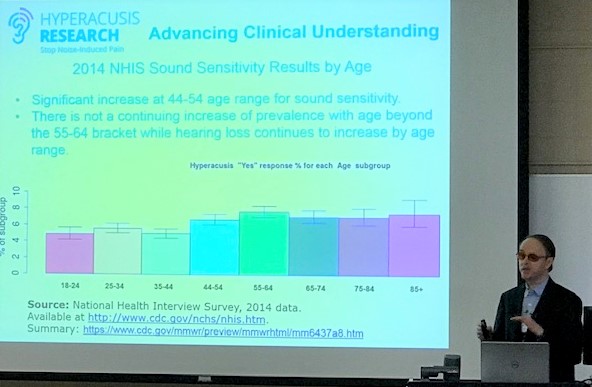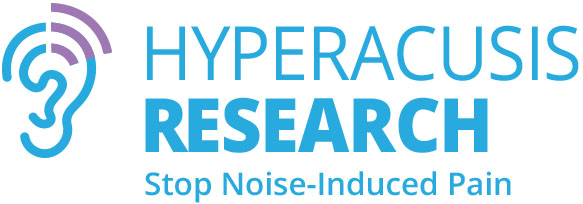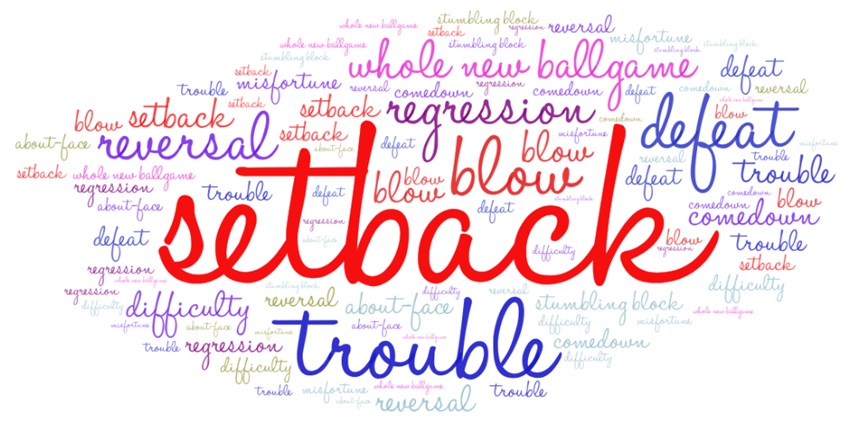Hyperacusis Research president Bryan Pollard spoke to doctors and audiologists at the University of Iowa’s 27th Annual International Conference on the Management of the Tinnitus & Hyperacusis Patient. Bryan’s topic was “Clinical Advancements for Managing Hyperacusis with Pain.”
Bryan started with a patient story that included one new focus beyond pain for clinical assessments: the topic of setbacks.
 Last year, Bryan presented results from our Sanford CoRDS Hyperacusis Survey. This year, Bryan presented results from a new streamlined survey that was completed by more than 200 participants just before the conference. The survey was more targeted to see if pain and setbacks were highly ranked in a broader population of tinnitus and hyperacusis sufferers. Key points from the survey are below:
Last year, Bryan presented results from our Sanford CoRDS Hyperacusis Survey. This year, Bryan presented results from a new streamlined survey that was completed by more than 200 participants just before the conference. The survey was more targeted to see if pain and setbacks were highly ranked in a broader population of tinnitus and hyperacusis sufferers. Key points from the survey are below:
- Everyday sounds cause pain or discomfort for 94% of participants.
- The top 3 primary complaints in rank order were: ear pain caused by sound, loudness sensation, and increased tinnitus from new sounds.
- 52% indicated their symptoms were not the same in each ear with a large difference between symptom severity in each ear.
- Of those with symptom differences between ears, 73% had a potential explanation for the difference.
- 92% responded yes to the question: “Do your symptoms ever worsen for a period of time (sometimes referred to as a setback)?”
- 50% experience these setbacks daily to weekly.
- For 44%, it takes weeks to months for recovery
In an open ended question, most indicated that without protection in new loud environments that caused a setback, the dominant impact would be an increased level of pain.
While this data clearly points to many factors needing deeper research, it also points to factors that clinicians need to consider when treating patients with hyperacusis with pain. One clinical speaker indicated they are starting to treat hyperacusis with pain differently than loudness hyperacusis accounting for both pain and setbacks. They are looking to patient experiences to determine the approaches that can enable progress while attempting to minimize setbacks. As we search for a cure, we are grateful to see clinical progress in understanding more of the challenges patients who have hyperacusis with pain face.


I have hyperacusis with pain. What are some new methods?